Falcon Trophy
Malcolm Nicholls Ltd utilised 3D printing and 3D scanning technology to reproduce and 3D print trophies – 18 replica trophies to be exact! For an Abu Dhabi HSBC Championship-associated golf tournament.
Falcon Trophy
An exciting project that saw Malcolm Nicholls Ltd utilise 3D printing and 3D scanning technology to reproduce 18 3d Print trophies (replicas) for an Abu Dhabi HSBC Championship-associated golf tournament.
On the Abu Dhabi golfing circuit, the Falcon Trophy has long been synonymous with the Abu Dhabi HSBC Championship. The Pro-Am tournament serves as a supporting competition which precedes the main event. Event organisers wanted smaller versions of the Falcon Trophy to award winners of the curtain raiser tournament and briefed isodo3D about producing 18 quarter-size replicas, six for each of the next three tournaments.
Isodo3D worked along with Malcolm Nicholls Ltd when they found that the most cost-effective and non-compromising method was to print the falcon and golf ball and then hand turn the wooden plinths. A HP 3D Structured Light Scanner Pro S3 was used to scan the trophy and create the data required to print the trophy. Using our latest SLA technology a master model was printed.
3D Print Trophies – Case Study
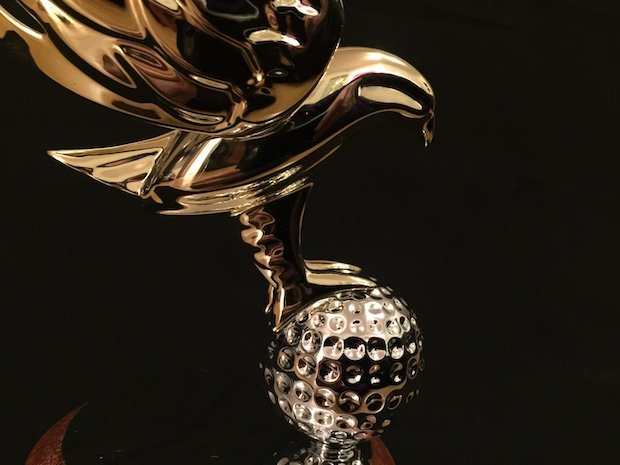
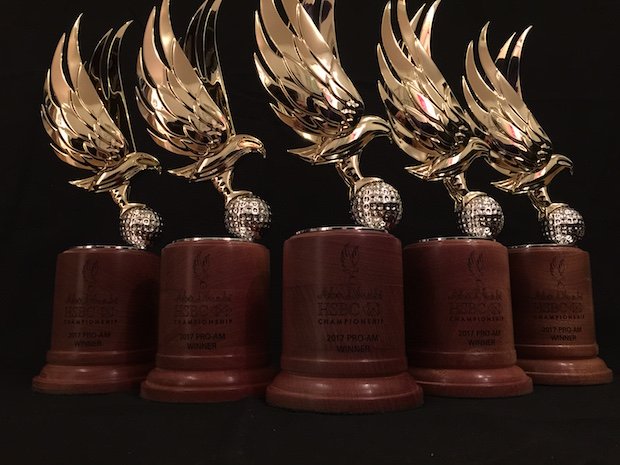
Why Use Low Volume Production / Low Volume Manufacturing?
With the growing demand for Low Volume Production also known as low volume manufacturing and small batch production Malcolm Nicholls Ltd can produce 1 – 1000’s of parts.
If you’re looking for a one-off bespoke top-quality part such as a trophy, or you require 1000’s customised parts such as widgets, we have the solutions to suit your needs.
It is an increasingly popular option as it allows for a smaller investment in tooling and materials while providing fast access to the market. It also acts to bridge the gap between initial prototypes and mass production.
Historically, manufacturing components in low quantities has always been a costly exercise. With the advent of 3D printing and vacuum casting many constraints previously faced can now be significantly reduced. Technologies such as SLS (Stereolithography) and FDM (Fused Deposition Modelling) can now be used (especially for non-seen parts), to produce components in quantities as low as 1s and 2s and up to thousands, but still with exceptional material properties such as flame retardancy and high-heat requirements. Traditional design constraints, usually associated with injection mould tooling for example, can now be ignored enabling designers to be more efficient and reduce part count within assemblies.
Looking to Produce Multiple Parts?
We can produce anything from one to thousands
Boston Baton
Malcolm Nicholls Limited (MNL) utilised our 3D Printing technologies and low-volume manufacturing to produce 3 series of batons for the One Run for Boston
Boston Baton Trophy
Three 3D printed series of batons for huge fundraising races across the USA
Malcolm Nicholls Limited (MNL) a well-established 3D Printing and prototype model-making company, who have been producing high-quality prototypes for over 50 years, were delighted to lend its services free of charge to such a worthy cause. MNL were approached due to their reputation for the quality of product and service. In 2014 MNL produced the first series of Baton, and over the last few years, MNL has produced 3 series of batons for the relay races across America.
1st Series of the baton (One run for Boston)
Like most of the world, three friends in England were horrified to watch coverage of the Boston Marathon bombing on April 15. The three runners wanted to do something positive so they organized a California to Massachusetts relay race to raise money for bombing victims. The majority of funds raised will benefit One Fund Boston, whose organizers live in England but weren’t deterred by distance.
The relay, which started June 7th in the L.A. area, ends June 30th in Boston.
“When something like this happens, it doesn’t matter where you’re living — it just packs a hard punch,” says Kate Treleaven, 34, of Devon County, England.
Despite the distance, marathoner Treleaven and fellow runners Danny Bent and James Hay were determined to bring something positive to the sorrow. The result: One Run for Boston, a relay race across the United States that has attracted more than 1,000 runners and raised, so far, almost $50,000.
The money goes to One Fund Boston, the charity that helps those most adversely affected by the bombing. Three people died and more than 260 were injured.
“We thought, ‘How could something so awful happen to a group of people who were doing something so wonderful?’ “, Treleaven said. “It was a need to purge that hideousness and basically bring things back to a happier equilibrium.”
The trio settled on dates and mapped out a route using Google Maps and MapMyRun, an app for runners. A friend in art school created an Olympic-style torch with a GPS tracking device so the public could follow the relay on the OneRunforBoston.org website.
The concept baton was originally produced using 3D printing on a Stereolithography (SL) machine by Malcolm Nicholls Limited (MNL), also based in the UK. MNL is one of the longest-established service providers of 3D printing parts and components and has been using the technologies for the best part of 20 years. MNL has donated its time and expertise to this worthy cause.
3D Printed Baton Trophy Case Study
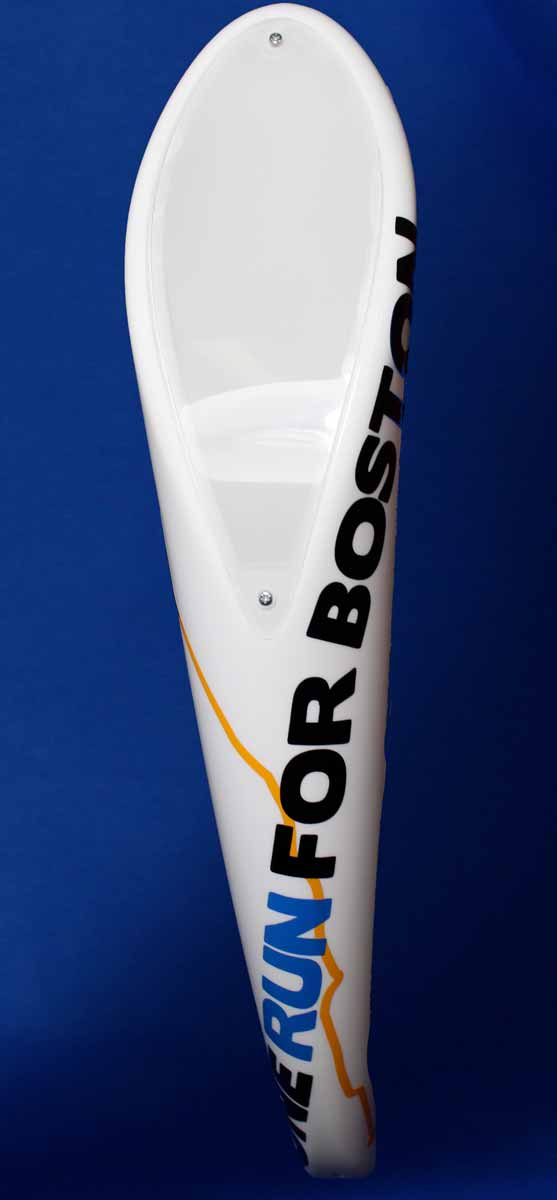

2nd Series of the baton – (One run for Boston)
Urged by the success of the first relay the fundraising organisers staged another relay race to raise yet more funds. The 3328-mile relay across the USA is a 300+ stage relay run where sponsored runners carry the Boston Baton from LA on the west coast to Boston on the East coast of America. This year the month-long relay was timed to finish one week before the start of the Boston Marathon which would mark the 1st anniversary of the horrific event.
So far the total raised for the bombing victims is in excess of 450,000 dollars
3rd Series of baton – (United Relay of America)
United Relay of America is the first-ever triple coast-to-coast charity relay setting off from Seattle, San Francisco and Los Angeles and meeting in New York City! Three routes from the West to the East coast of America, hundreds of runners and cyclists and one aim: inspire, empower and connect people across America – to not just be part of relay history, but to be united for a better world! One of the beneficiary charities was, The We Are Here Movement, founded by Alicia Keys. Funds donated to the We Are Here Movement are split equally among the We Are Here charity partners so your fundraising efforts help a wider range of causes than ever before!
The design of the baton originally emulates a Lily a symbol of peace.
The Making Of The Batons.
For each design of the baton, the initial stage was to 3D print via Stereolithography on one of their (SLA5000) machines at MNL. The batons consisted of an assembly of a variety of components using different materials. Once the 3D prints were built, they were given to MNL’s highly skilled finishing department. The finishing department starts with the removal of visible layers and then will work with the surface of the model up to the point of the required level of finish such as a perfect high gloss. The finished baton “masters” were to be used as patterns for MNL’s soft tooling process; Silicone tooling. From these tools a series of castings were produced, predominately in an ABS durable material in gloss, some were translucent white and some clear and tinted. The 3rd series of baton also consisted of elastomers giving a tactile grip. To give the baton a completed look graphics were applied to depict the route, logos, etc.
All of the batons also needed to be illuminated for nighttime running, and GPS trackers were fitted internally so, at any point of the run, the sponsors could monitor their location from the website.
For the internal components, unfinished 3D printed Selective Laser Sintered (SLS) parts were produced. Multiple batons were produced from silicone tooling for each stage of each race.
MNL has proudly donated their time and expertise to these causes free of charge
The variety of colours, materials and textures and quality of finish in the Batons is a great showcase for the capabilities of the fantastic team at MNL.

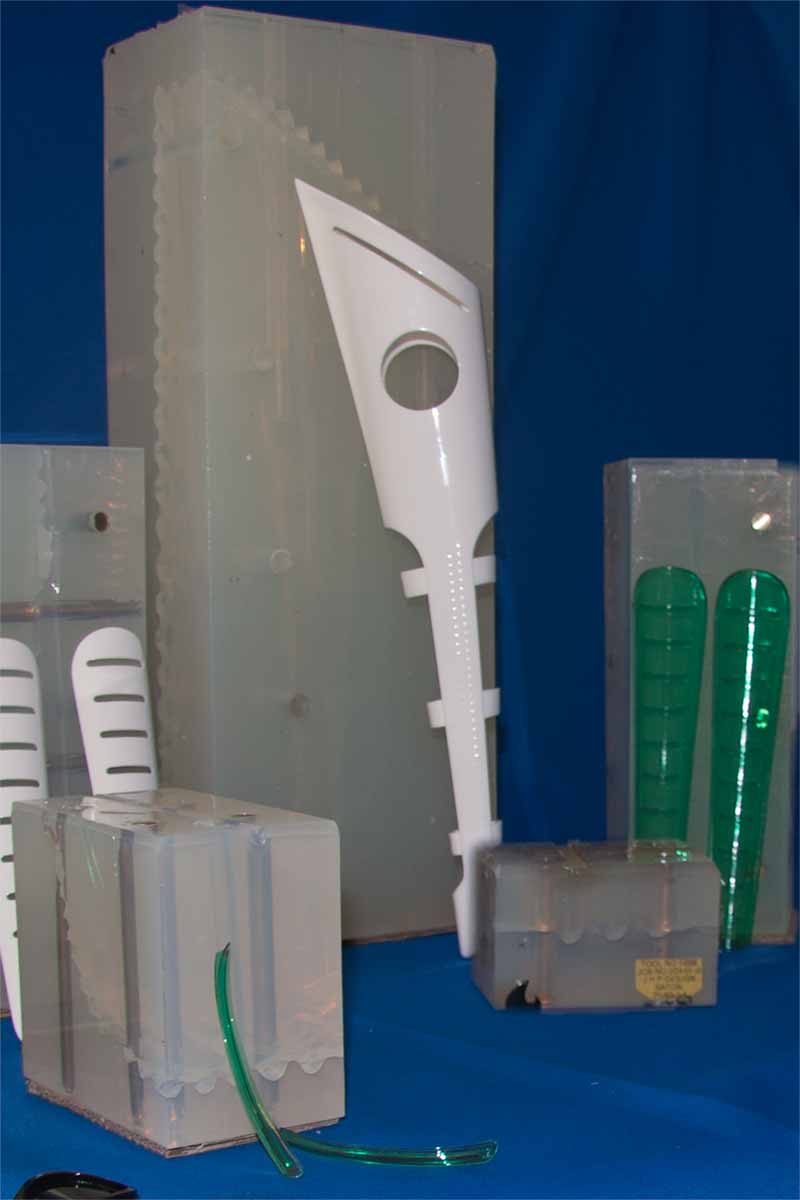
Image demonstrating the production of the 3D Printed trophy batons utilising our silicone moulding expertise to produce a series of castings.
Looking to Produce Multiple Parts?
We can produce anything from one to thousands
Scale Model – Can Making Machine
From scale presentation models and exhibition models to prototypes parts MNL have the technology to help you
“Can Making Machine” – Exhibition Display Model
When approached by a leading supplier of machines that produce canning/food machinery, we were asked to produce a 3D printed exhibition model not only to produce a scale model of a machine but to also make it semi-function. The Third-Scale model was to represent a 4-metre long canning machine. It was to be able to demonstrate the unique selling points of the machine at a forthcoming trade show in Europe. With so many moving parts, the accuracy of the process and model were imperative.
The primary stage for MNL was to work on the 3D CAD data, when you scale a model down to such a small scale factor some elements can be lost – made so small they disappear, these would then need to be scaled at a different factor. Even simple nuts and bolts had to be re-drawn. As an example, a half-inch thread at 1/3 scale becomes 1/6th inch. this had to be altered to the nearest metric equivalent to prevent the necessity of producing non-standard bolts. Over 200 man-hours were spent working with the CAD, MNL wanted to ensure that what was produced or rectified was correct so many 3D PFS was created to show the end customer the design intent. As many sub-assemblies were to operate (albeit manually), once again MNL turned to the CAD to communicate with the customer, illustrating which assemblies moved, and be what extent. Animated movies were produced and sent to the customer to once again demonstrate the intended movements of the model.
Once 3D data was approved the manufacturing processes started. Many larger components were CNC machined from ABS for accuracy, strength and durability. Some components were produced via SLS, whilst the rubber items were made from silicon tooling. The chain was made in one assembly by connex machinery.
Vibrant colours were used to draw attention to the model at the trade show. The different colours illustrated the various areas and USPs of the design and function of the machine. MNL suggested having the sides of the model in clear acrylic to show internal components and how they function.
Once the model was completed a purpose-built plinth and flight case were produced so the model could be shipped worldwide without the worry of it getting damaged. Then to finally finish the model a Perspex cover was produced.
3D Printed Exhibition Model
Interested in learning more about how we can help?
Got a project we could help with this minute?Upload your files for quotation here...
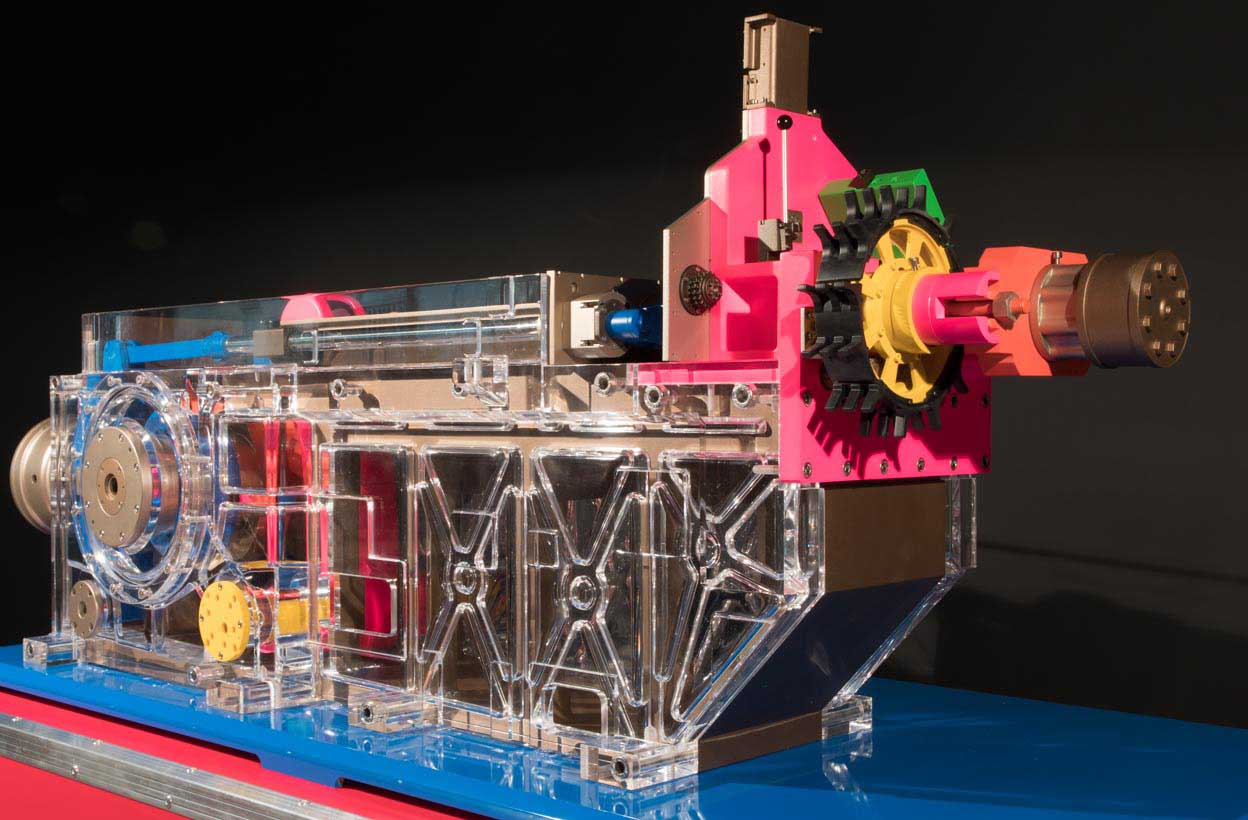
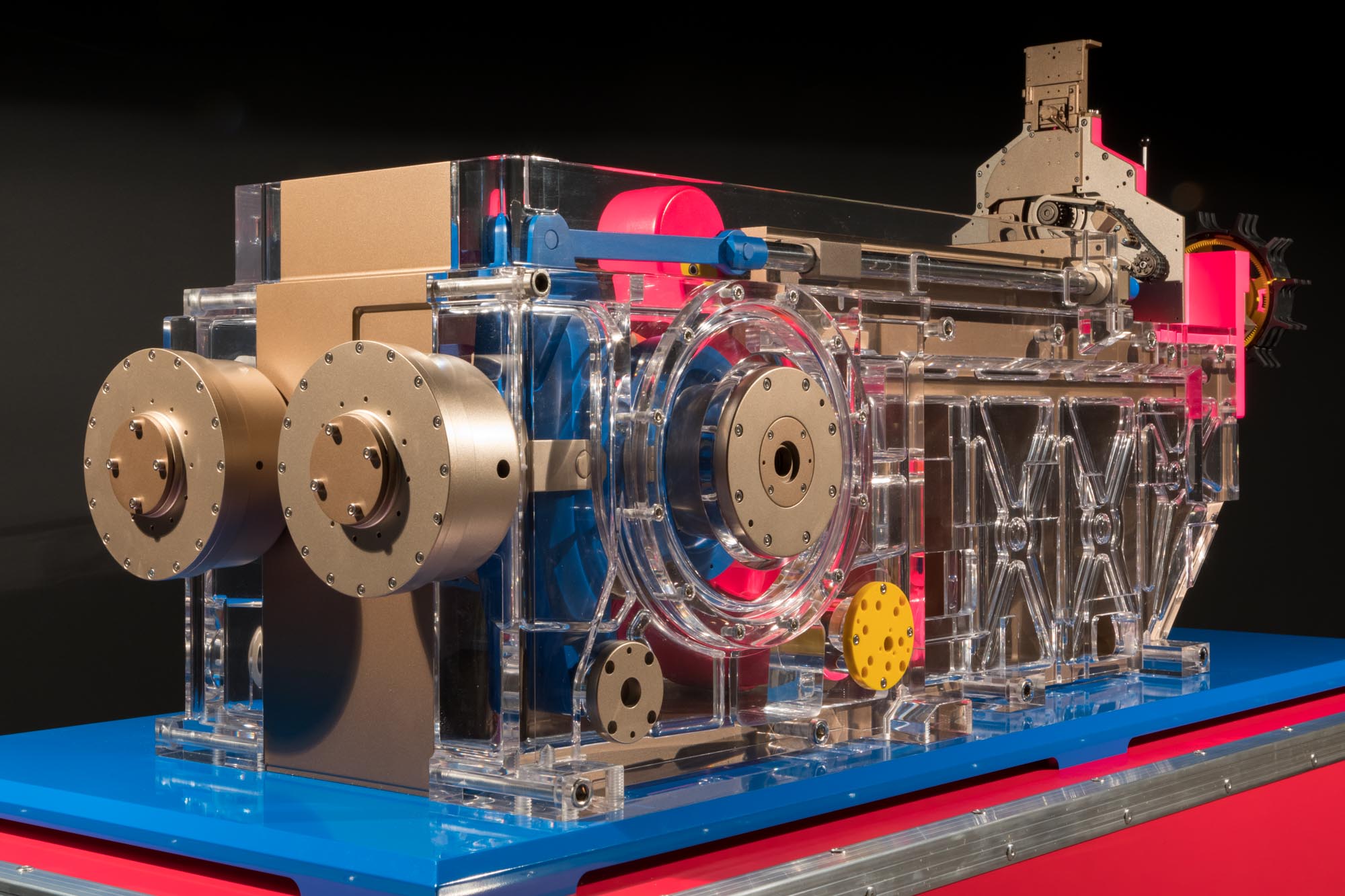



Triscan Fuel Pump Advertising Nozzle
Malcolm Nicholls Limited (MNL) loves a challenge. For this project a 3D printed Stereolithography (SLA) model was produced. These 3D printed models were given to MNL’s finishing department where the build lines were removed and worked until a smooth surface finish was achieved.
Theses printed parts were to be used as master patterns for MNL’s soft tooling (silicone tooling). Once tooling was completed MNL cast the end products in a highly durable material, also colour matched to the customers supplied pantone reference. Maximum castings from this tool for a rigid material were 20 castings.
The handle also had a clear window produced in the exact same way but the level of initial finish was a perfect high gloss due to needing a water clear casting. This window was to be used for advertising.
Interested in learning more about how we can help?
Got a project we could help with this minute?
Upload your files for quotation here...
Mugler Perfume 3D Printed Retail Display Stand
We produced oversized 3D printed stars for Mugler Perfumes retail display
Thierry Mugler Perfume 3D Printed Retail Display Stand
Luxury 3D Printed Retail Display
Thierry Mugler Luxury Perfume was established in 1973, the Paris-based fashion brand is redefining its retail presence by consolidating its fragrance lines under a single brand name and logo. A notable addition to Thierry Mugler’s retail identity is the stunning Thierry Mugler Angel Star, featuring sculpted facets designed to play with light and shadows.
Leading The Way in Point Of Sale 3D Printing
As a leading name in 3D printing for luxury brands, we played a pivotal role in this transformation. Employing Stereolithography (SLA), we crafted an oversized 3D printed ‘master model’ for the Angel Star, utilizing a process renowned for its exceptional surface finish.
Our finishing department meticulously achieved a perfect gloss on the 3D printed model, essential for the subsequent metalizing coat application, which imparts a high shine chrome effect. These 3D printed models are created with precision. The 3d Printed retail displays now serve as captivating point-of-sale displays for Thierry Mugler’s luxury brand, seamlessly blending innovation with retail aesthetics.
3D Printed Point Of Sale Case Study
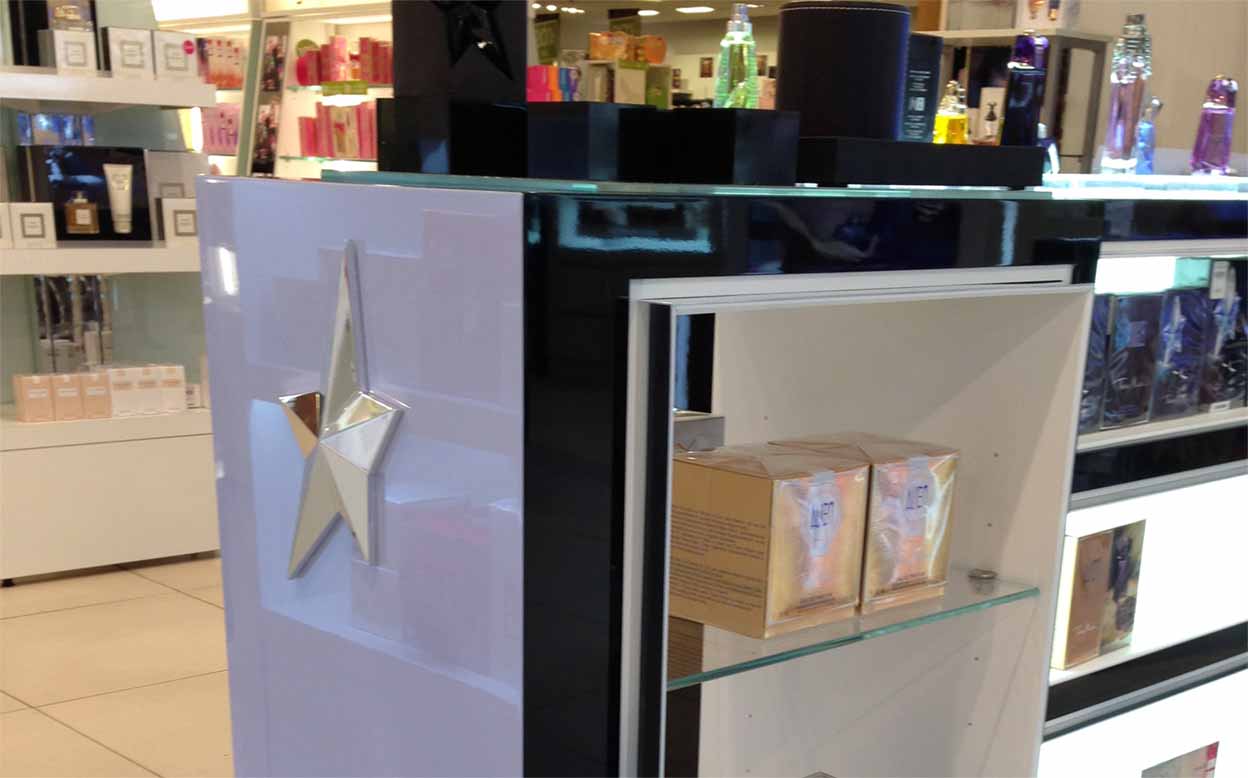
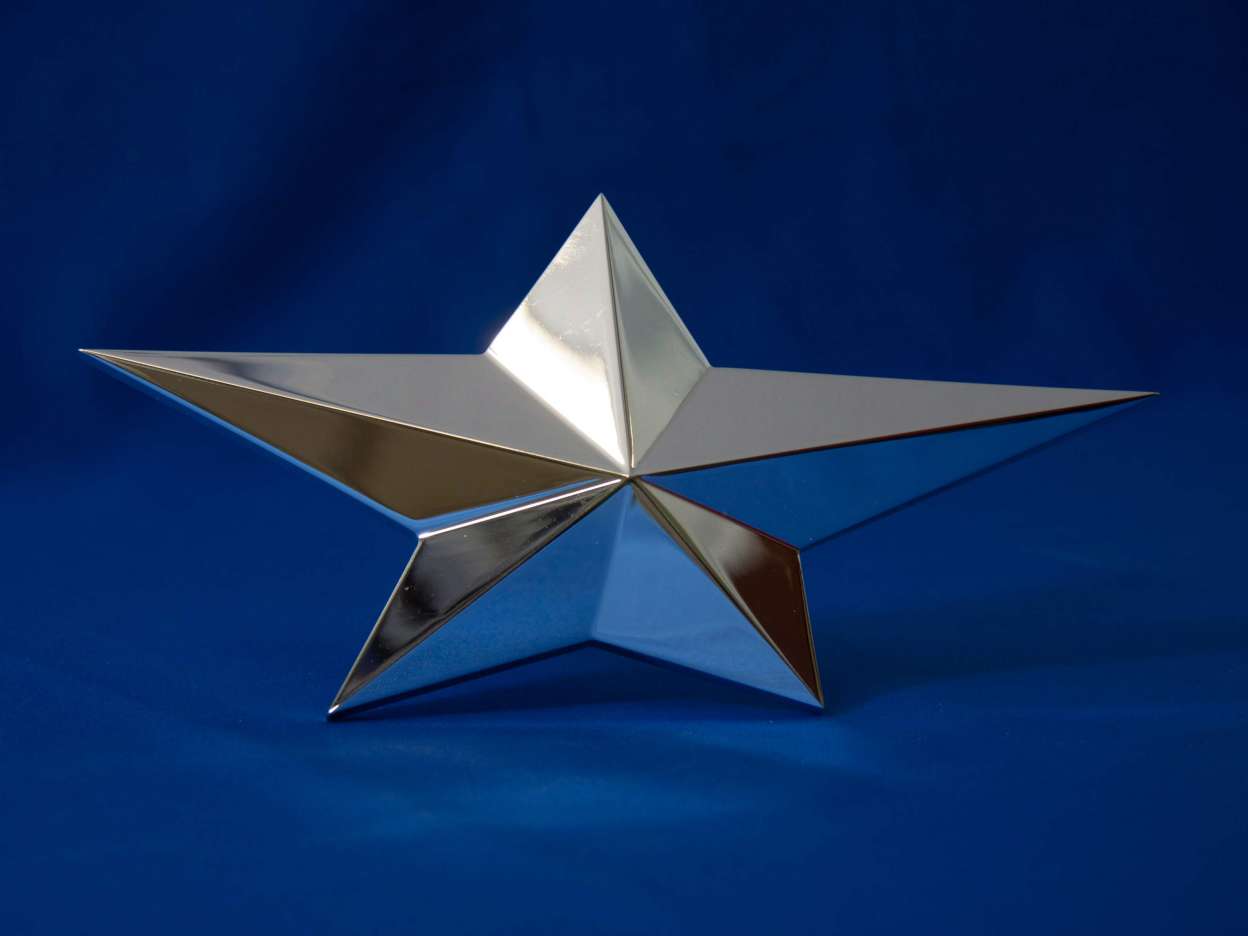
Looking to Produce Multiple Parts?
We can produce anything from one to thousands
3D Printed Alexander McQueen Perfume Bottle
Crafted for a Harrods shop window display
Alexander McQueen Oversized Perfume Bottle
Challenge:
Create a 3D printed perfume bottle replicating the iconic Alexander McQueen design for a prominent POS (point-of-sale) prototype in Harrods’ window display. The display piece needed to capture the intricate details and luxurious feel of the original perfume bottle, while remaining durable and lightweight.

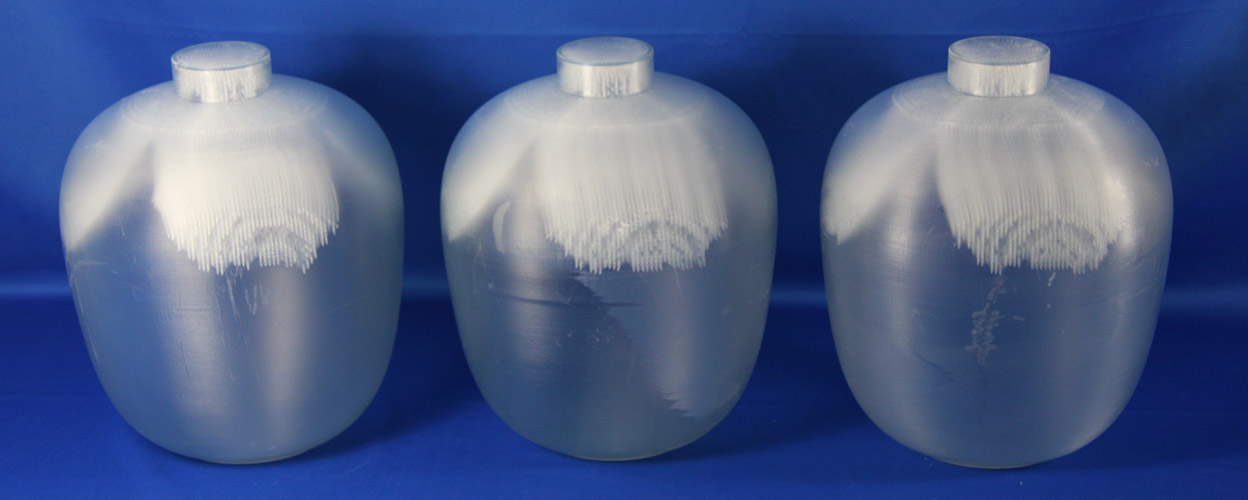
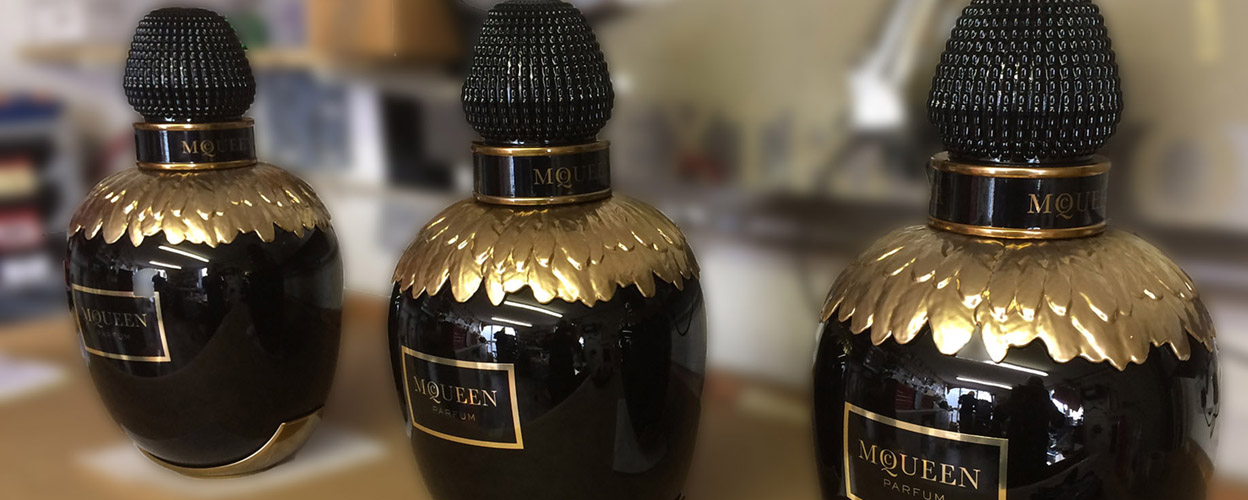
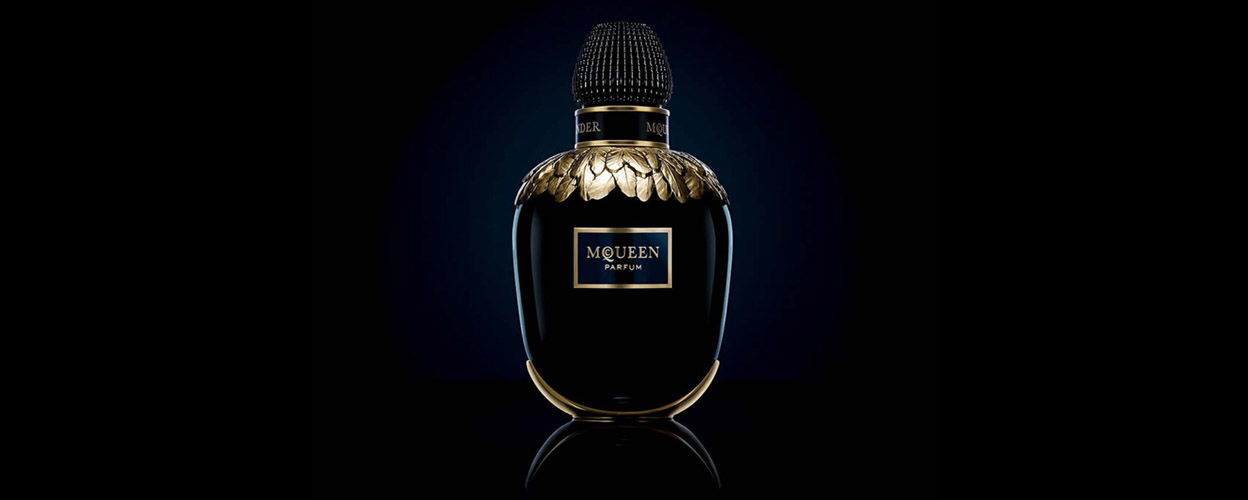
Solution:
Malcolm Nicholls Ltd (MNL) were approached by a creative design consultancy to deliver this project. Utilising the provided STL file, MNL employed stereolithography – a 3D printing method known for its exceptional resolution – to produce the bottle and the intricate, antique gold feathers adorning the neck. This technology ensured the delicate details of the feathers were preserved with stunning accuracy.
Every element of the retail display Alexander McQueen bottle is hand-crafted and meticulous – as demonstrated by the beauty of the beguiling fragrance flacon. Being an object d’art the intricate antique gold feathers couple with the signature of the house, envelop the crown of the bottle this being topped with an exquisite facetted cap which was then based with gold. A stunning dress-table jewel for all fans of the House of McQueen.
The Process:
- 3D Printing: Both the bottle and feathers were 3D printed using stereolithography.
- Assembly: Three of each component were printed, strategically positioned to maximize the build platform and expedite the process. This efficient approach allowed MNL to complete the project in just two days.
- Finishing: As per the client’s request, the 3D printed pieces were supplied unfinished, allowing for further customization and embellishment.
Results:
The final oversized perfume bottle, meticulously crafted through 3D printing, served as a captivating centerpiece for Harrods’ window display. The project showcased MNL’s expertise in:
- High-resolution 3D printing: Utilising stereolithography to capture intricate details and achieve a luxurious finish.
- Rapid prototyping: Delivering the POS prototype within a tight timeframe of two days.
- Meeting client requirements: Providing unfinished components for further customisation as per the client’s vision.
Conclusion:
This project demonstrates the power of 3D printing in creating visually stunning and functional POS displays for the luxury retail sector. MNL’s expertise in 3D printing technology and rapid prototyping capabilities proved instrumental in delivering a successful solution for this prestigious client.
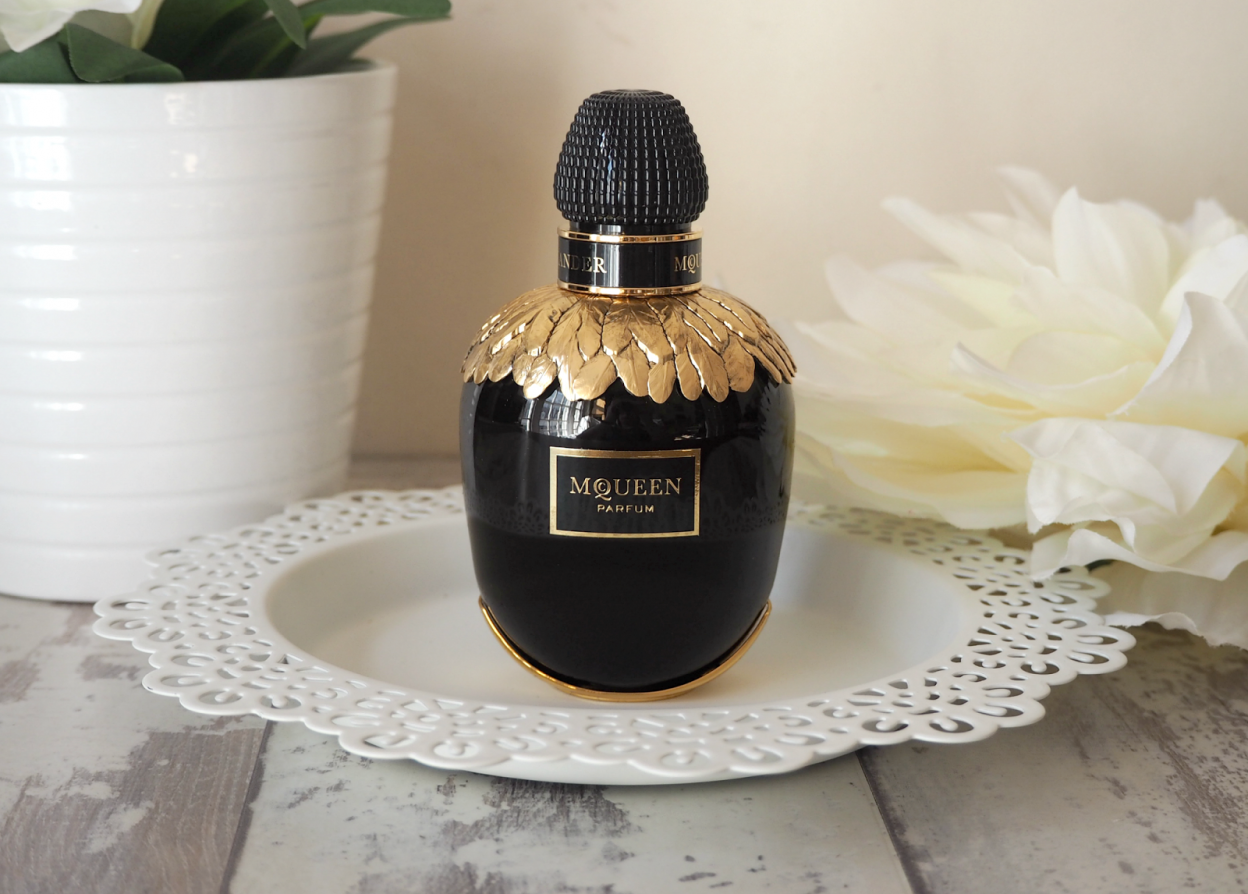
Looking to Produce a POS Prototype?
We can help